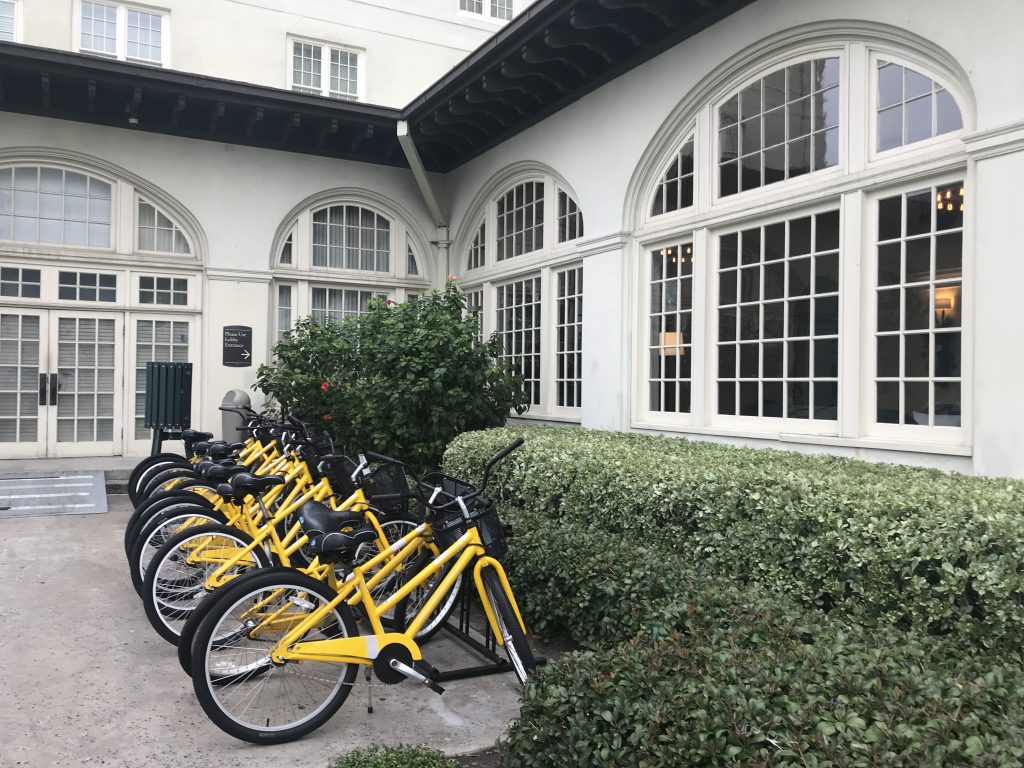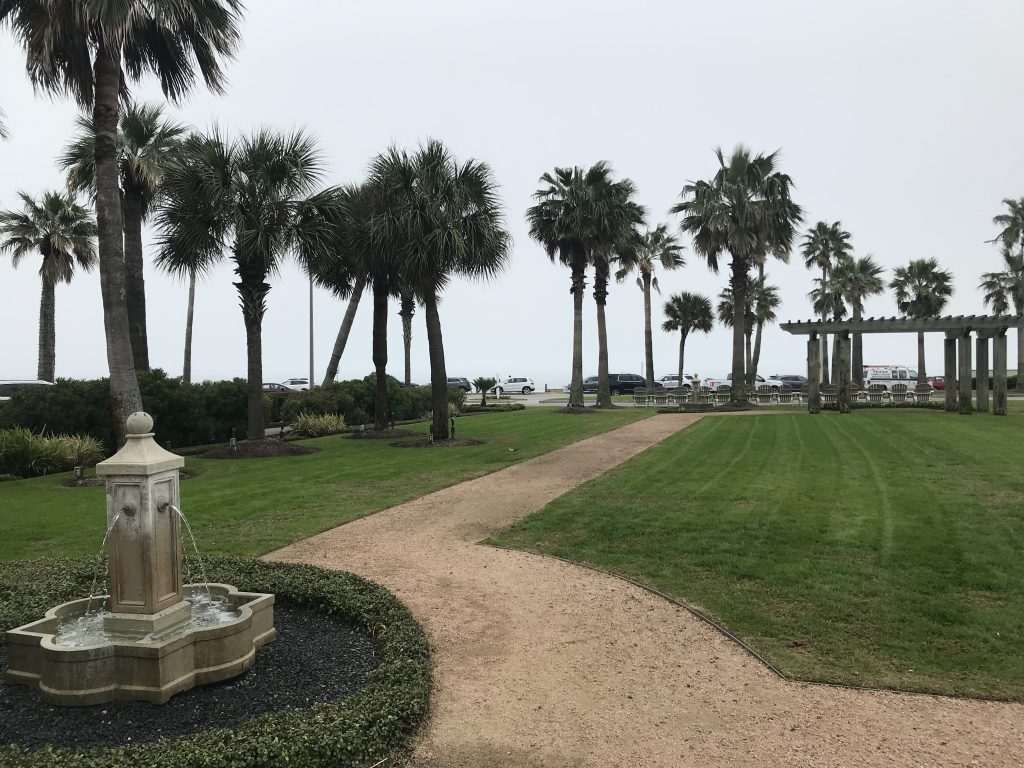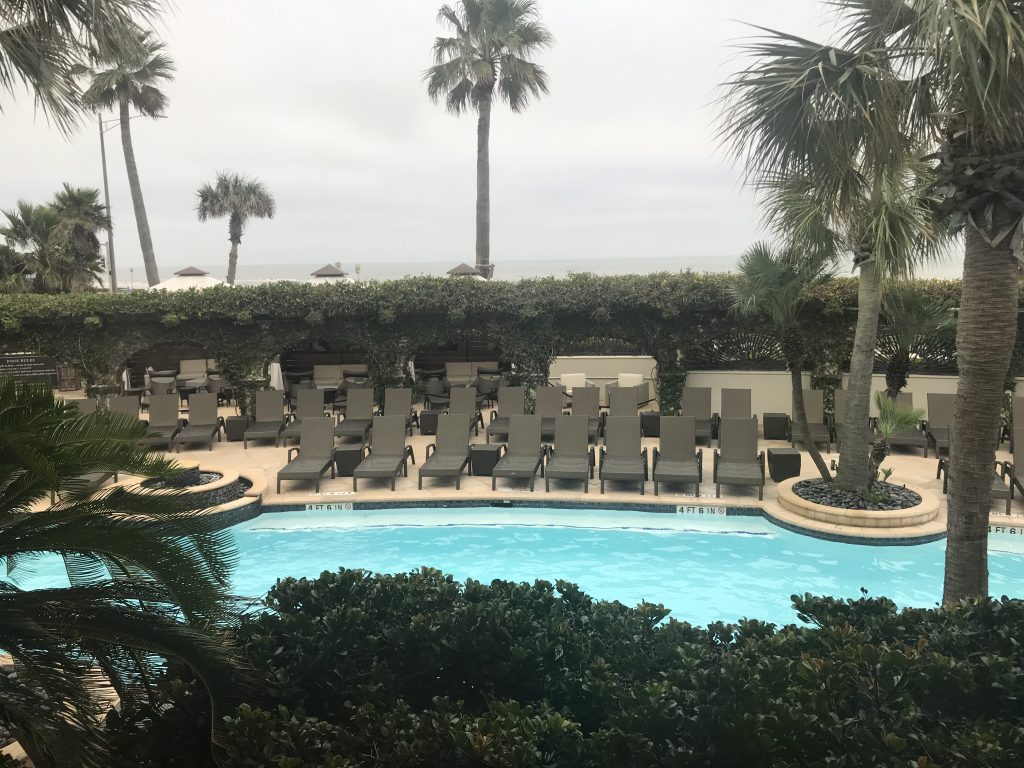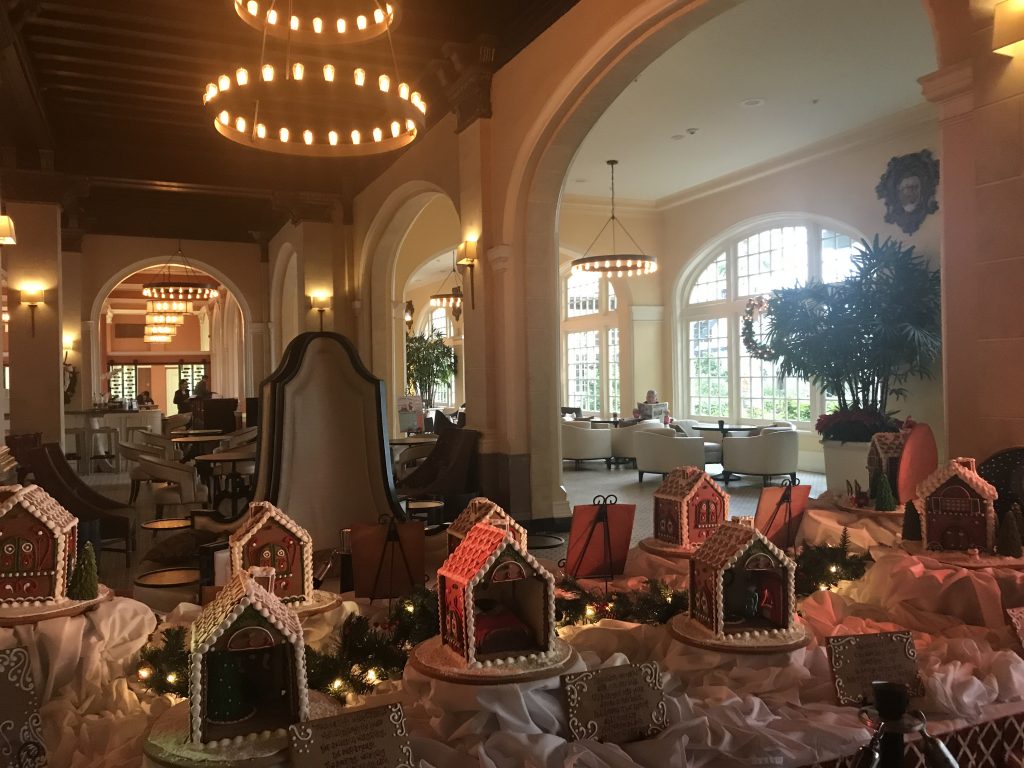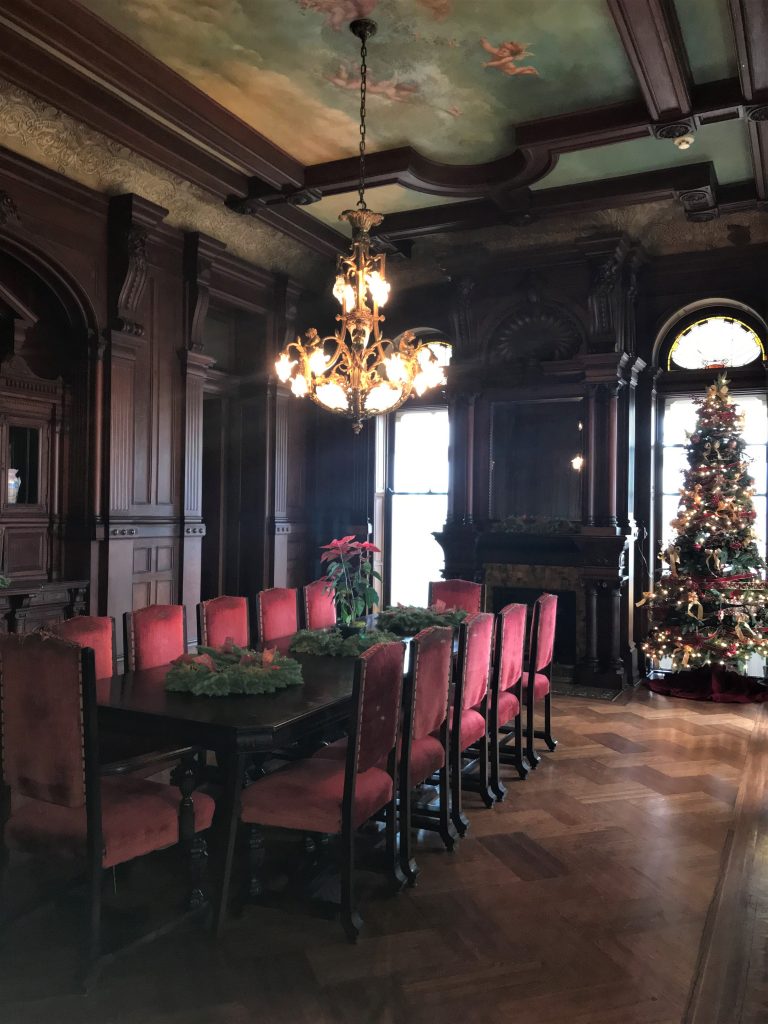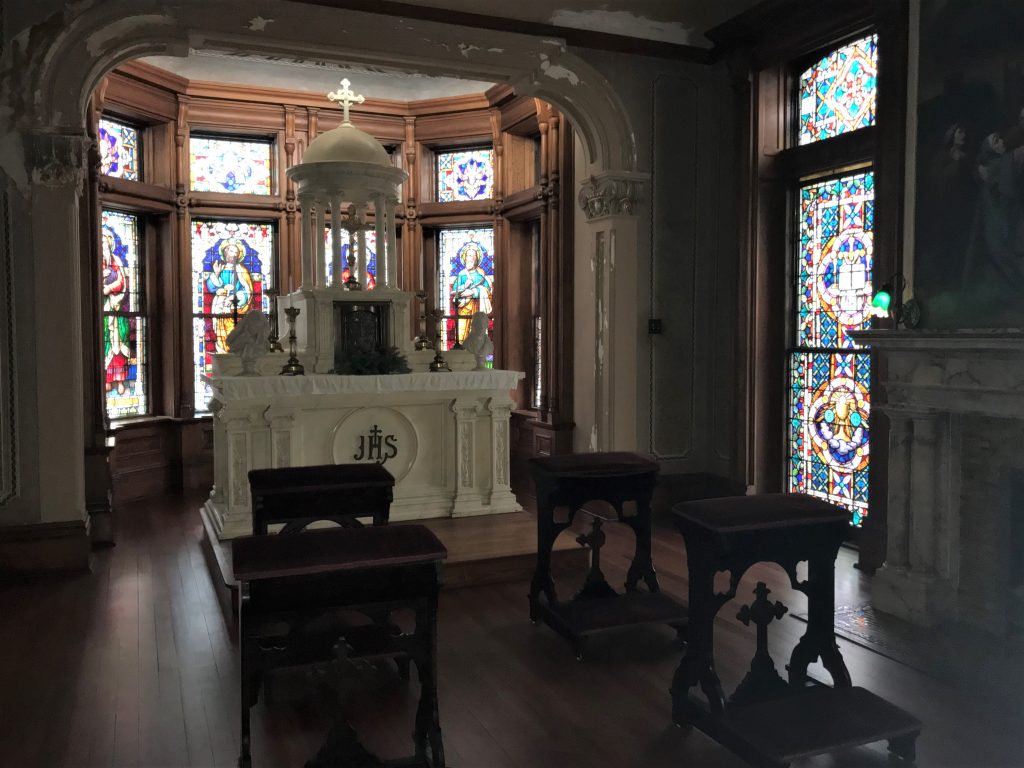We often spend a portion of the holidays in Houston. Although we love seeing family, sometimes Houston itself gets old. We’ve tried various trip add-ons through the years – Texas Hill Country, Big Bend National Park, New Orleans, and even a detour through Hot Springs, AR and Memphis, TN. This year, we decided to take an overnight trip to Galveston since the weather was mild at 70 degrees in December.
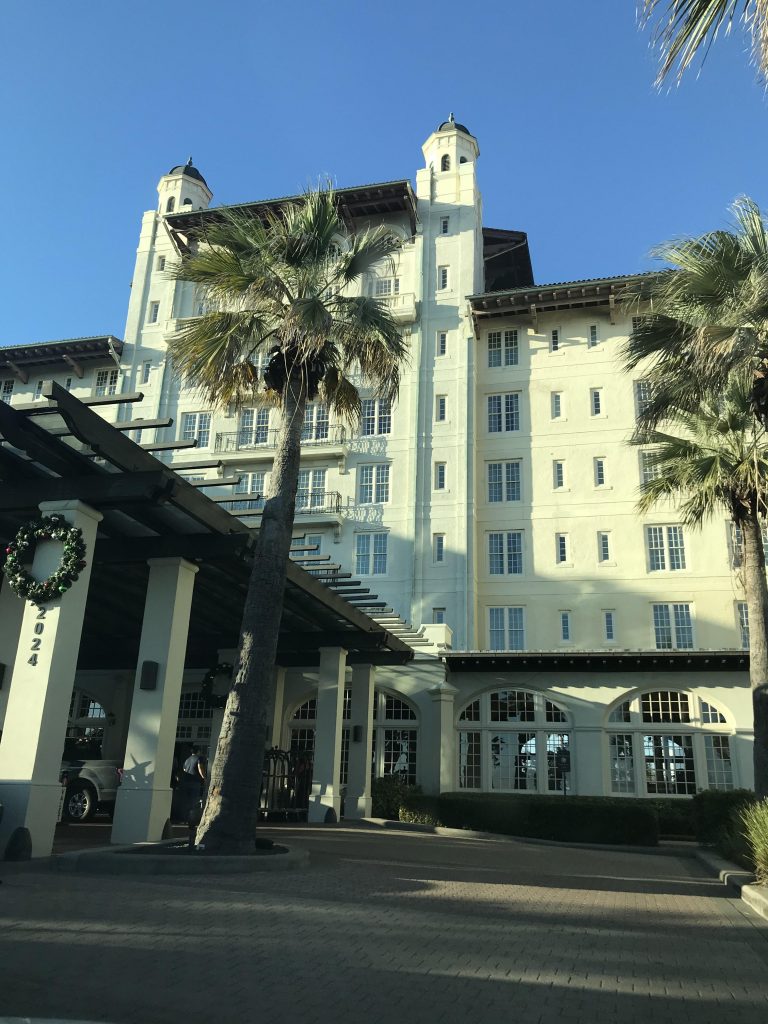
It’s important to note that Galveston experienced its pinnacle as a prominent port city, rivaling New Orleans, during the late 1800s. However, everything changed on September 8, 1900, when a massive, Category 4 hurricane wiped out the town and killed approximately 6,000 residents. For more detailed history, I recommend Eric Larson’s book, “Isaac’s Storm.” Although the citizens quickly rebuilt the town, Galveston never attained its former glory as nearby Houston took over as the larger port city. In many ways, a trip to Galveston is like stepping back in time.
During Prohibition, two Sicilian brothers, Sam and Rosie Maceo, built a gambling empire that led to Galveston’s second surge of popularity. Frank Sinatra, Mel Torme, Phil Silvers and others frequently headlined acts at the Maceo’s high-class gambling joints bringing tourists and money in. This “Free State of Galveston” lasted until the Texas Rangers closed the famous Balinese Room for good in 1957.
Bicycle along the Seawall
To prevent catastrophic damage from future hurricanes, city leaders proposed a 17-foot high seawall. Built from 1902-1904, the seawall protected the town from the stronger Galveston Hurricane of 1915. By 1963, the seawall extended 10 miles in total length offering a flat, walking and biking path right alongside the Gulf.
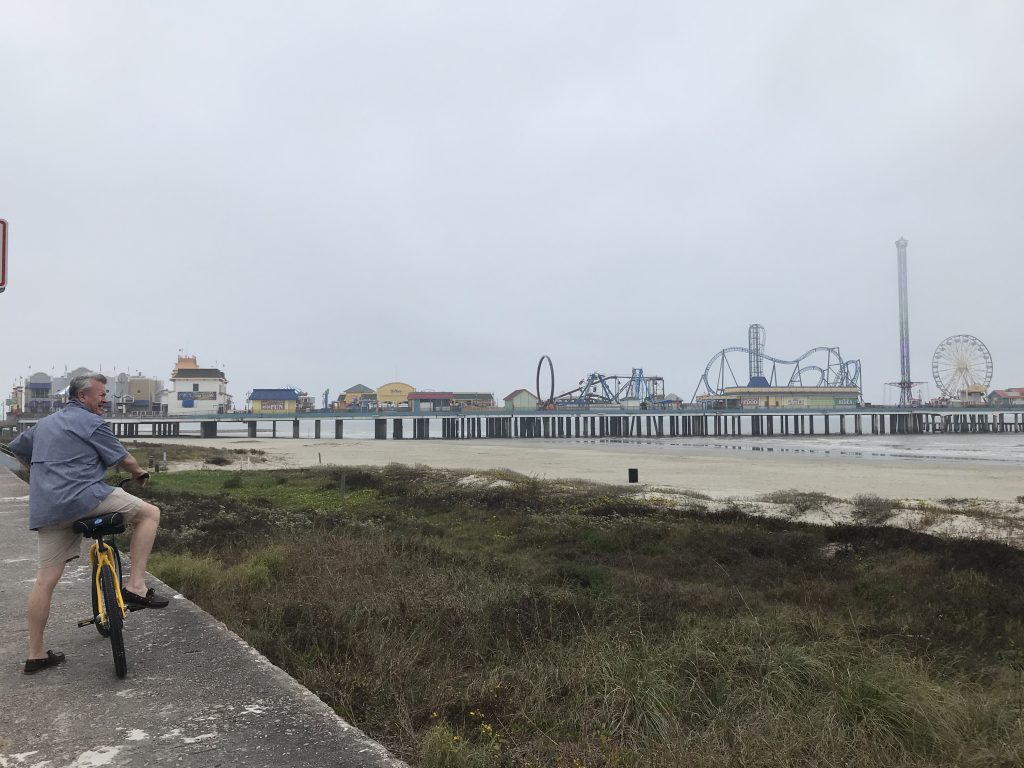
After riding past the roller coaster and Ferris wheel at Pleasure Pier, we stopped at Murdoch’s Bath House. When built in the late 1800s, the business rented bathing suits to beachgoers. Completely destroyed by the 1900 Hurricane, the owners rebuilt the cantilevering wooden structure over the water. Over the years, they have faithfully restored it after damages from the hurricanes of 1909, 1915 and Ike in 2008. Today, Murdoch’s sells souvenirs, gifts and beverages while offering views off the back deck.
Up and down the seawall, we biked past a diverse collection of beachfront hotels. These ranged from big chains like Hilton, Holiday Inn Vacation Club and family-friendly Homewood Suites to a large number of locally-owned properties, including the Commodore on the Beach, which looked right out of the 1960s and the motel-style Gaido’s Seaside Inn. However, the oldest and most historic hotel on the beach is the Hotel Galvez, where we stayed the night.
Explore the Hotel Galvez
Since 1911, the Hotel Galvez has beckoned visitors from all over the globe including politicians FDR, Eisenhower, LBJ and Nixon. Nicknamed “The Queen of the Gulf,” the 6-story, Spanish Mission-style building hotel cost $1 million to build and spared no expense for its time.
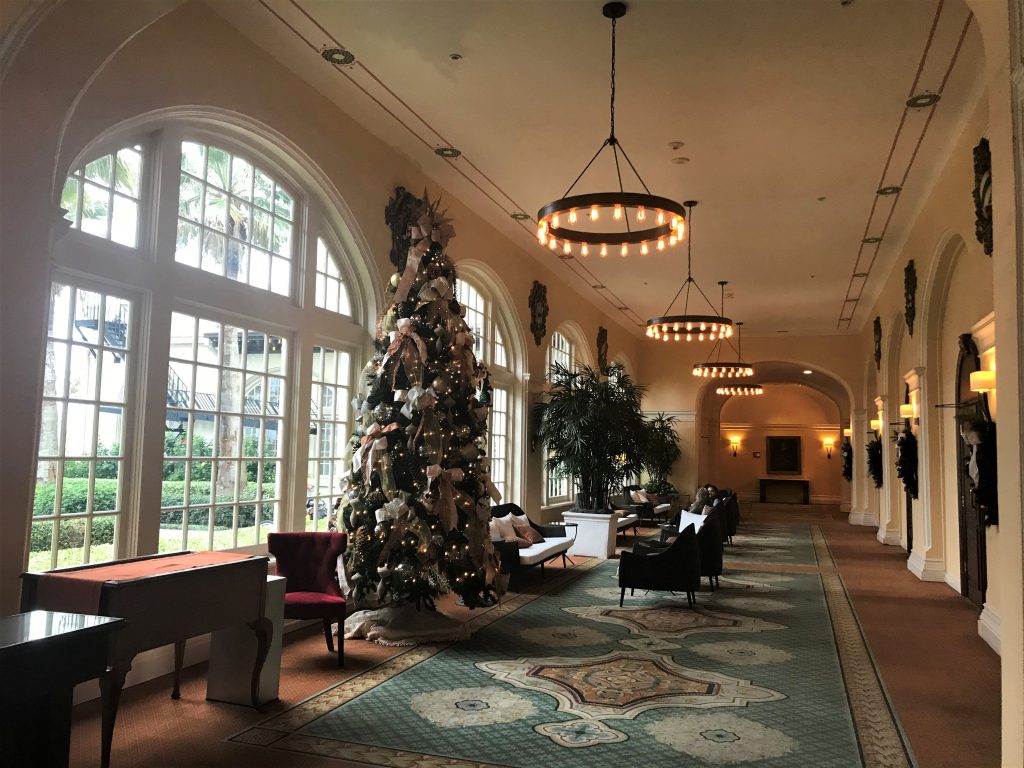
Located directly across from the Gulf of Mexico, the 224-room hotel retains much of its original elegance with an impressive lobby, two sun porches, a music room, ballrooms and outdoor gardens. However, it was not always a hotel. During WWII, the US Coast Guard used the building as its headquarters until 1944.
We visited the Hall of History on the lower level and downloaded the free audio tour of the hotel. Through pictures and artifacts, we saw how the hotel changed with the times. After WWII, the hotel became a favorite of Howard Hughes, Phil Silvers and others during the gambling heydey of the 1940s and 1950s. In the 1970s it was shuttered until George R. Mitchell bought it and restored it to its original design in 1993.
Dine at The Strand Historic District
Although historical, The Hotel Galvez and the Galveston Seawall aren’t the oldest parts of Galveston. That honor goes to the Strand Historic District where many turn-of-the-century buildings survived the 1900 Hurricane.
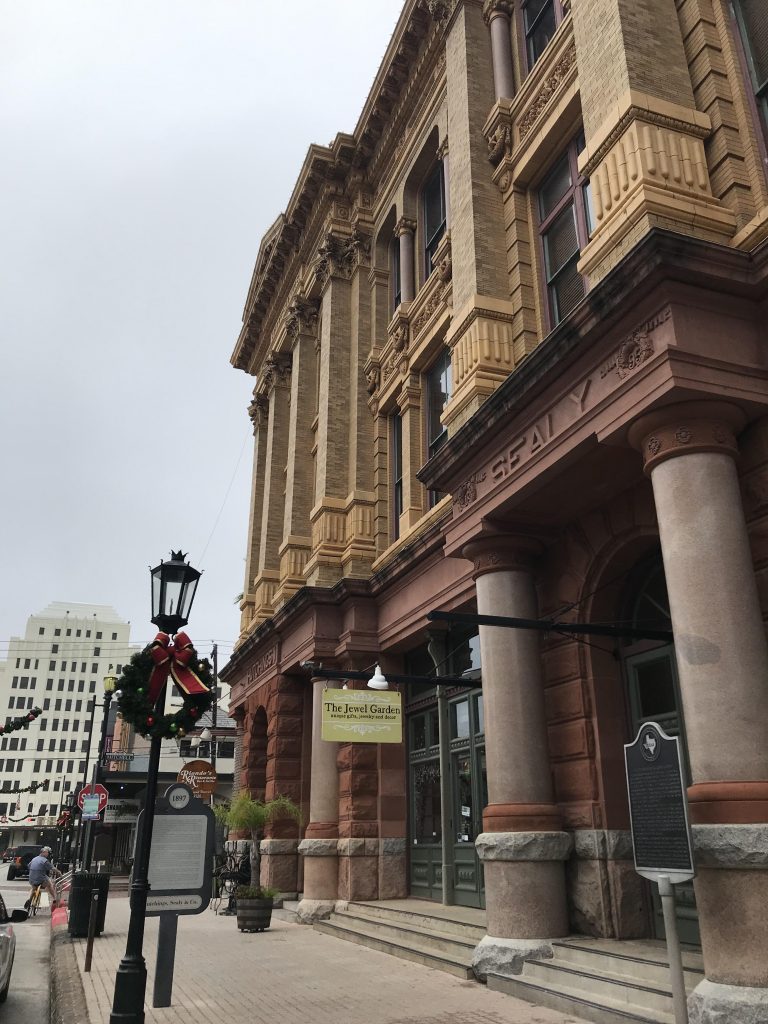
When gambling ceased in 1957, Galveston suffered an economic downturn. And like many cities during that time, the downtown area became vacant and somewhat seedy as businesses left the area.
Texas philanthropist George Mitchell (the same person who bought and restored the Hotel Galvez) invested heavily in this part of Galveston’s downtown area in the 1980s. He restored and converted the Leon & H. Blum Building (built in 1879) into a full=service hotel. Restaurants and shops followed. Today, the Strand is a hip part of Galveston.
Tour Bishop’s Palace
The next morning, we rode bikes back downtown to the port where we watched passengers debark a Disney cruise. After enjoying coffee in the artsy Postoffice district, we rode over to tour Bishop’s Palace.
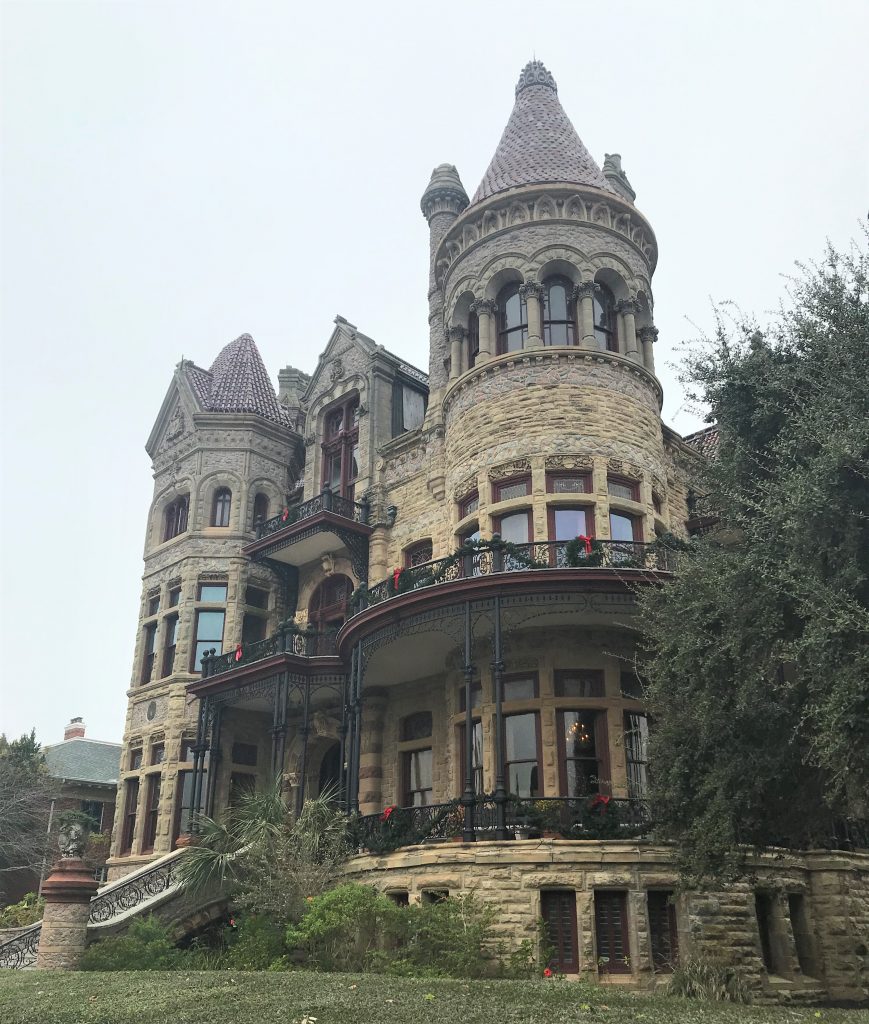
Although originally built for lawyer Walter Gresham and his family in 1892, the Catholic archdiocese bought the 19,000-square foot, Victorian-style mansion in 1923. Bishop Christopher Byrne lived there until his death in 1950 and the nickname Bishop’s House stuck.
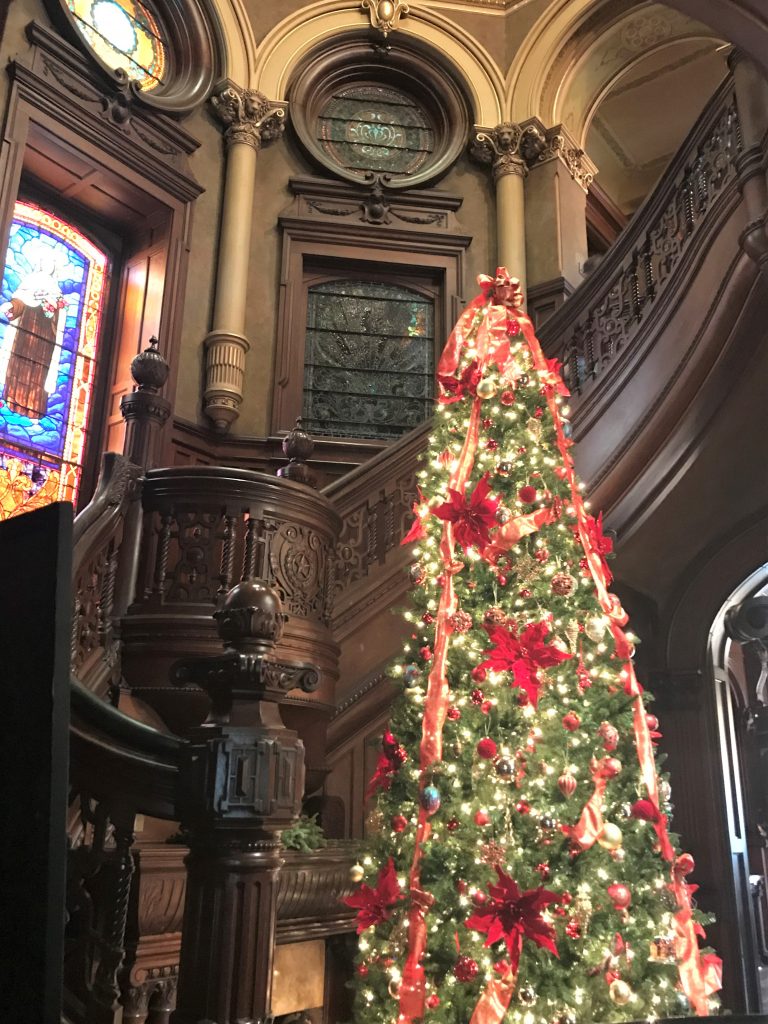
The house’s centerpiece is the large rotunda surrounded by a curved staircase and stained glass windows. From here, the library, music room, parlor, dining room extend out like spokes on a wheel.
No expense was spared during construction with floor-to-ceiling windows, terraces on both the first and second floors and massive fireplaces in many of the rooms. Even the ceiling in the dining room was hand-painted with precise detail by Mrs. Gresham. The use of expensive building materials (the exterior granite and interior varieties of dark wood and marble) paid off when the house suffered little damage during the 1900 Hurricane.
Upstairs, a chapel used by the Bishop during his residency featured more stained-glass windows. Several bedrooms looked onto the Sacred Heart Catholic Church across the street.
In conclusion
As we left Bishop’s Palace and pedaled back to the hotel, our trip was coming to the end. I felt that we had just scratched the surface of all Galveston has to offer.

